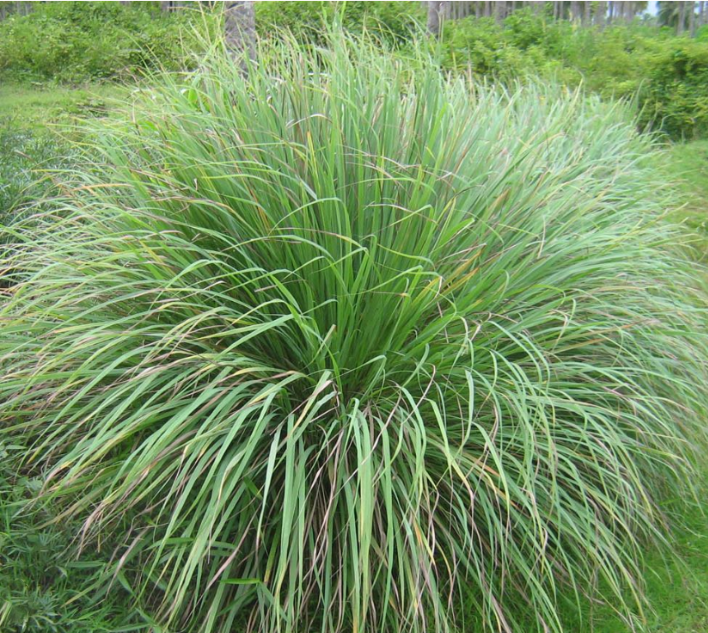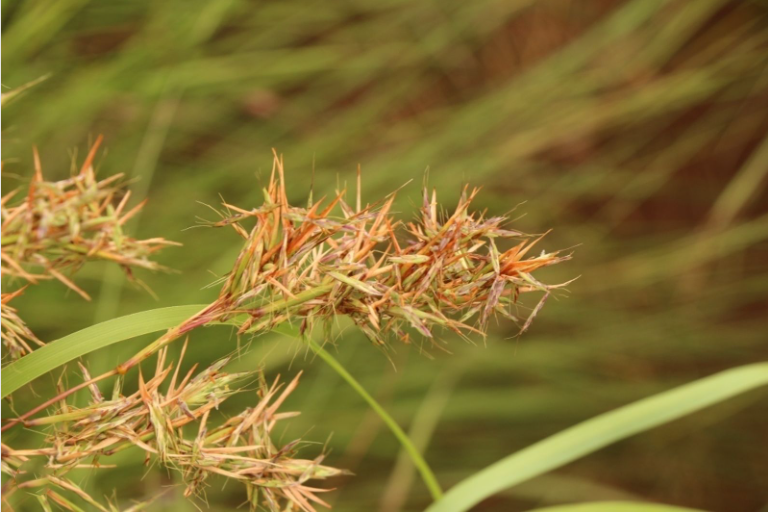모기를 쫓아주는 정원 식물
Introduction(머릿말)
여름이 다가오면 따뜻한 날씨와 함께 귀찮은 모기도 찾아옵니다. 화학적 방충제를 사용하기보다는 정원에 자연적인 대안을 심어보세요. 여기에 여러가지 식물을 재배하여 모기를 효과적으로 막으면서 아름다움과 향기를 더하는 방법을 단계별로 안내합니다. 사계절이 순환하는 지역에 거주하는 관계로, 특히나 겨울의 낮은 기온을 견뎌내는 '내한성'도 고려하여 식물들을 선정했다.
En
As summer draws near, the balmy weather heralds not only the return of sunshine but also the unwelcome presence of bothersome mosquitoes. Rather than resorting to chemical repellents, contemplate cultivating natural alternatives within your garden. Here is an amiable, step-by-step guide to assist you in nurturing some plants that can proficiently deter mosquitoes while enhancing the beauty and fragrance of your outdoor sanctuary. Residing in a region characterized by the cyclic progression of four distinct seasons, I have specifically selected plants with consideration for their hardiness, particularly their ability to withstand the frigid temperatures of winter.
Primary Narrative(본문)

시트로넬라로 시작하세요: 인기 있는 모기 퇴치 식물. 모기를 유인하는 냄새를 가려주는 레몬 향으로 유명합니다. 시트로넬라를 화분에 심거나 정원에 직접 심어 야외 공간 주위에 보호 장벽을 만드세요. 시트로넬는 일반적으로 따뜻한 기후에서 잘 자라며 추위에 민감합니다. 약 7°C (45°F)까지의 온도를 견딜 수 있지만, 영하의 조건은 너무 가혹합니다. 추운 지역에서는 시트로넬라를 화분에 심어 겨울이나 추운 달 동안 실내로 들여와 얼어붙는 온도로부터 보호하는 것이 좋습니다.

En
Start with Citronella: This popular mosquito repellent plant is known for its lemony scent, which masks the odors that attract mosquitoes. Plant citronella in pots or directly in your garden to create a protective barrier around your outdoor seating areas.
Citronella plants generally thrive in warm climates and are sensitive to cold. They can handle temperatures as low as about 45°F (7°C), but subzero conditions would be too harsh for them. In colder regions, it's best to grow citronella in pots so you can bring them indoors during winter or colder months to protect them from freezing temperatures.

라벤더 추가: 추운 조건에서도 견디며 모기를 쫓는 특성이 있는 식물을 찾고 있다면, 라벤더나 로즈마리를 고려해보세요. 🌿
라벤더는 진정 효과가 있는 향기를 제공할 뿐만 아니라 모기를 쫓아줍니다. 햇볕이 잘 드는 장소나 정원의 입구 근처에 심어, 아름다운 향기를 즐기면서도 모기 퇴치 효과를 극대화하세요.
라벤더는 다년생 식물로, 적절하게 관리하면 여러 해 동안 살 수 있습니다. 배수가 잘 되는 토양, 충분한 햇빛, 적절한 가지치기 등의 조건이 맞춰지면 라벤더는 번창하며 해마다 아름다운 꽃을 계속 피울 수 있습니다. 겨울철엔 보다 세심한 관리가 필요합니다. 라벤더는 최적 생육 온도가 15°C(59°F)에서 24°C(75°F)입니다. 꽃이 진 후 정기적으로 가지치기를 하면 식물의 모양을 유지하고 새로운 성장을 촉진하는 데 도움이 됩니다. 라벤더의 멀칭이 필요한 온도는 일반적으로 5°C 이하(41°F 이하)입니다. 이 온도 이하로 내려가면 라벤더의 뿌리를 보호하기 위해 멀칭을 사용하는 것이 좋습니다. 멀칭은 토양의 온도를 유지하고 뿌리를 결빙으로부터 보호하는 데 도움이 됩니다. 추운 지역에서는 늦가을에 멀칭을 깔아 라벤더가 겨울을 잘 보낼 수 있도록 해주세요.겨울 동안 라벤더를 보호하려면 다음과 같은 조치를 취할 수 있습니다.
노지 재배시:
*멀칭: 노지 재배 라벤더위로 낙엽이나 짚을 깔아 두꺼운 층을 만들어 주는게 좋습니다. 이는 뿌리 주변의 토양이 결빙온도 이하로 내려가는것을 방지해 주는 보온재 역할을 합니다.
*덮개 사용: 특히 혹독한 기후에서는 비닐이나 천을 사용하여 식물을 덮어 눈과 얼음으로부터 보호할 수 있습니다.
화분 재배시:
*실내로 이동: 저온이 예상되면 화분을 창고나 온실등의 실내로 이동 시켜야 합니다. 다만 충분한 빛을 받을수 있도록 합니다.
*물주기: 라벤더는 겨울에 휴면 상태에 들어가며 물을 적게 필요로 합니다. 과도하게 물을 주지 않도록 주의하세요, 과도한 물은 뿌리 썩음을 초래할 수 있습니다.
En
Lavender addition: If you're looking for plants that can withstand colder conditions and have mosquito-repelling qualities, consider lavender or rosemary. 🌿
Lavender not only provides a soothing fragrance but also repels mosquitoes. Plant it in sunny spots or near the entrance to your garden to enjoy its beautiful aroma while maximizing its mosquito-repelling effect.
Lavender is a perennial plant that can live for many years with proper care. With well-drained soil, plenty of sunlight, and proper pruning, lavender can thrive and continue to produce beautiful flowers year after year. Winter requires more careful management. Lavender's optimal growing temperature is between 59°F (15°C) and 75°F (24°C). Mulching for lavender is generally necessary when temperatures drop below 41°F (5°C). Regularly pruning the plant after flowering will help maintain its shape and encourage new growth. At temperatures below this, it is advisable to use mulching to protect the roots of the lavender. Mulching helps maintain soil temperature and protects roots from freezing. In cold regions, apply mulching in late autumn to help lavender get through the winter. To protect lavender during the winter, you can take the following measures:
In-Ground Plants:
*Mulching: Apply a thick layer of mulch around the base of the plant. This helps insulate the roots and protect them from freezing temperatures.
*Covering: In particularly harsh climates, you can cover the plants with a frost cloth or burlap to shield them from snow and ice.
Potted Plants:
*Move Indoors: Bring the pots indoors or into a sheltered area like a garage or greenhouse. Make sure they still get plenty of light.
*Reduce Watering: Lavender goes dormant in winter and requires less water. Be careful not to overwater, as this can lead to root rot.
By following these steps, you can help your lavender plants thrive year after year, even through the winter!
로즈마리를 키우세요: 이 다재다능한 허브는 요리를 질을 향상시키고 모기를 쫓아주는 역할을 합니다. 정원이나 화분에 로즈마리를 심고, 최상의 결과를 위해 충분한 햇빛을 받도록 하세요.

겨울철에 로즈마리와 같은 식물을 키울 때는 다음의 몇 가지 주의사항을 지키면 도움이 됩니다:
*실내로 들이기: 화분에 심은 식물이 있다면, 겨울철에는 실내나 온실, 차고 같은 보호된 장소로 옮겨주세요. 이렇게 하면 서리와 얼어붙는 온도로부터 식물을 보호할 수 있습니다.
*물 주기 줄이기: 겨울철에는 식물이 휴면 상태에 들어가므로 물을 적게 줍니다. 과도한 물 주기로 인한 뿌리 썩음을 피하려면 흙이 약간 말랐을 때 물을 주세요.
*온도 유지: 실내 온도를 일정하게 유지하고, 식물을 차가운 바람이나 난방구 근처에 두지 않도록 합니다. 적정 온도는 15-21°C (60-70°F)입니다.
*습도 유지: 겨울철에는 실내 공기가 건조할 수 있으므로, 습도 트레이를 사용하거나 가끔 식물에 물을 뿌려서 적절한 습도를 유지합니다.
이러한 단계를 따르면 로즈마리와 라벤더 등 식물을 건강하게 겨울철을 보낼 수 있게 도울 수 있습니다. 🌱
En
Grow Rosemary: This versatile herb enhances your meals and acts as a mosquito repellent. Plant rosemary in your garden or pots, ensuring it gets plenty of sunlight for the best results.
During winter, growing plants like rosemary and lavender requires a bit more attention to ensure they thrive. Here are some tips to help them survive and stay healthy during the colder months:
Bring Them Indoors: If you have potted plants, move them indoors or to a sheltered area like a greenhouse or garage. This helps protect them from frost and freezing temperatures.
Provide Adequate Light: Make sure your plants still receive plenty of sunlight, as they need at least 6 hours of direct light each day. Place them near a south-facing window or use grow lights if natural light is limited.
Reduce Watering: In winter, plants enter a dormant phase and require less water. Be careful not to overwater, as this can lead to root rot. Allow the soil to dry out slightly between waterings.
Maintain Temperature: Keep the indoor temperature consistent and avoid placing plants near drafts or heating vents. A temperature range of 60-70°F (15-21°C) is ideal.
Humidity: Indoor air can be dry in winter, so consider using a humidity tray or misting the plants occasionally to maintain adequate humidity levels.
By following these steps, you can help your rosemary, lavender, and other plants stay healthy and happy throughout the winter season. 🌱
바질 심기: 주방 필수품인 바질은 강한 향기로 모기를 쫓아주는 효과가 있습니다. 바질 화분을 좌석 근처에 두어 신선한 허브에 쉽게 접근하고 모기와의 만남을 줄여보세요.

바질이 잘 자라기 위한 적정한 기온과 습도는 다음과 같습니다: 바질은 따뜻한 기후를 좋아합니다. 이상적인 기온은 21°C에서 29°C(70°F에서 85°F) 사이입니다. 저온에 매우 민감하므로, 밤 기온이 10°C(50°F) 이하로 떨어지지 않도록 해야 합니다.
바질은 적당한 습도를 선호하지만, 너무 높은 습도에서는 곰팡이와 병에 걸리기 쉬울 수 있습니다. 적정한 습도는 40%에서 60% 사이입니다. 실내에서 기를 경우, 공기가 너무 건조하다면 가습기를 사용하거나 식물 주변에 물받침을 두어 습도를 조절할 수 있습니다.
바질이 충분한 햇빛, 물, 그리고 적절한 기온과 습도를 유지할 수 있도록 관리하면 건강하게 자라고 신선한 허브를 얻을 수 있습니다. 🌿
En
Plant Basil: A kitchen staple, basil's strong scent is effective at keeping mosquitoes away. Position basil pots near your seating areas for easy access to fresh herbs and fewer mosquito encounters.
The ideal temperature and humidity for basil to thrive are as follows: Basil loves a warm climate. The ideal temperature ranges from 70°F to 85°F (21°C to 29°C).
Basil is very sensitive to low temperatures, so make sure the nighttime temperature does not drop below 50°F (10°C). Basil prefers moderate humidity, but it can easily be prone to mold and disease in very high humidity.
The optimal humidity is between 40% and 60%. If growing indoors, if the air is too dry, you can use a humidifier or place a water tray near the plant to control the humidity.
By managing sufficient sunlight, water, and the proper temperature and humidity, basil can grow healthily and provide fresh herbs.🌿
레몬 밤을 시도해보세요: 시트러스 향이 나는 레몬 밤은 강력한 모기 퇴치제입니다. 잎을 으깨어 기름을 방출하고 피부에 바르면 추가적인 보호 효과를 얻을 수 있습니다. 화분에 심거나 정원 내 지정된 구역에 심어보세요.

레몬밤은 여러해살이 식물입니다. 올바른 환경에서 재배하면 여러 해 동안 잘 자랄 수 있습니다. 레몬밤은 따뜻하고 햇볕이 잘 드는 장소에서 가장 잘 자라며, 겨울에는 땅 속 뿌리가 살아남아 다음 해에 다시 성장할 수 있습니다.
레몬밤은 온대 기후에서 잘 자랍니다. 레몬밤의 이상적인 기온 범위는 낮 동안 15°C에서 21°C(60°F에서 70°F) 사이이며, 밤에는 약 13°C(55°F)입니다. 레몬밤은 40%에서 60% 사이의 적절한 습도를 선호합니다.
레몬밤은 매우 내구성이 강하며 겨울 조건에서도 생존할 수 있습니다. -30°C(-20°F)까지 견딜 수 있습니다. 레몬밤이 겨울을 잘 견딜 수 있도록 다음과 같은 예방 조치를 취할 수 있습니다:
멀칭: 식물의 뿌리를 단열하고 얼음으로부터 보호하기 위해 뿌리 주변에 멀칭을 적용합니다.
가지치기: 겨울이 오기 전에 죽거나 손상된 부분을 잘라내어 잠재적인 질병이나 해충이 겨울을 나지 않도록 합니다.
덮개 사용: 특히 혹독한 기후에서는 서리 천이나 삼베 천을 사용하여 식물을 덮어 극한의 추위로부터 보호합니다.
이러한 방법을 통해 레몬밤은 겨울을 견디고 봄에 다시 자랄 수 있습니다.
En
Try Lemon Balm: With its citrusy aroma, lemon balm is a powerful mosquito deterrent. Crush the leaves to release their oils and apply them to your skin for added protection. Plant it in pots or a designated area of your garden.
Lemon balm (Melissa officinalis) thrives in a temperate climate. The ideal temperature range for lemon balm is between 60°F to 70°F (15°C to 21°C) during the day and around 55°F (13°C) at night. Lemon balm prefers moderate humidity levels, ideally between 40% to 60%.
Lemon balm is quite hardy and can survive winter conditions. It can tolerate temperatures as low as -20°F (-30°C), making it suitable for USDA hardiness zones 4 to 93. To help lemon balm survive the winter, you can take the following precautions:
- Mulching: Apply a layer of mulch around the base of the plant to insulate the roots and protect them from freezing temperatures.
- Pruning: Cut back any dead or damaged growth before winter sets in to prevent potential disease or pests from overwintering.
- Covering: In particularly harsh climates, you can cover the plants with a frost cloth or burlap to shield them from extreme cold.
By taking these measures, lemon balm can survive the winter and regrow in the spring.
개박하 재배를 고려하세요: 고양이에게 미치는 영향으로 잘 알려진 개박하는 또한 효과적인 모기 퇴치제입니다. 개박하에 포함된 네페탈락톤 성분은 DEET보다도 더 효과적입니다. 모기를 쫓기 위해 개박하를 화분에 심거나 경계 식물로 키워보세요.

개박하는 여러해살이 식물입니다. 올바른 조건에서 재배하면 겨울에도 살아남아 매년 새로 성장할 수 있습니다. 개박하는 비교적 추위에 강하지만, 아주 추운 지역에서는 약간의 보호가 필요할 수 있습니다. 특히 극도로 추운 날씨가 예상된다면, 식물 주변에 멀칭을 하거나 보호 덮개를 제공하는 것이 좋습니다.
개박하(캣닢, 네페타 카타리아)은 15°C에서 24°C(60°F에서 75°F) 사이의 기온에서 잘 자라며, 이상적인 습도는 40%에서 60%입니다.
캣닢은 매우 내구성이 강하며 겨울 조건에서도 생존할 수 있습니다. -30°C(-20°F)까지 견딜 수 있습니다. 캣닢이 겨울을 잘 견딜 수 있도록 다음과 같은 예방 조치를 취할 수 있습니다:
멀칭: 식물의 뿌리를 단열하고 얼음으로부터 보호하기 위해 뿌리 주변에 멀칭을 적용합니다.
가지치기: 겨울이 오기 전에 죽거나 손상된 부분을 잘라내어 잠재적인 질병이나 해충이 겨울을 나지 않도록 합니다.
덮개 사용: 특히 혹독한 기후에서는 서리 천이나 삼베 천을 사용하여 식물을 덮어 극한의 추위로부터 보호합니다.
이러한 방법을 통해 캣닢은 겨울을 견디고 봄에 다시 자랄 수 있습니다.
En
Consider Catnip: Known for its effect on cats, catnip is also an effective mosquito repellent. The compound nepetalactone found in catnip is even more effective than DEET. Grow catnip in pots or as a border plant to keep mosquitoes at bay.
Catnip (Nepeta cataria) thrives in temperatures between 60°F to 75°F (15°C to 24°C) and prefers moderate humidity levels, ideally between 40% to 60%.
Catnip is quite hardy and can survive winter conditions. It can tolerate temperatures as low as -20°F (-30°C). To help catnip survive the winter, you can take the following precautions:
- Mulching: Apply a layer of mulch around the base of the plant to insulate the roots and protect them from freezing temperatures.
- Pruning: Cut back any dead or damaged growth before winter sets in to prevent potential disease or pests from overwintering.
- Covering: In particularly harsh climates, you can cover the plants with a frost cloth or burlap to shield them from extreme cold.
By taking these measures, catnip can survive the winter and regrow in the spring.
제라늄 재배: 이 화사한 꽃들은 정원을 밝게 해줄 뿐만 아니라 모기를 쫓아줍니다, 특히 레몬향이 나는 품종이 효과적입니다. 화분에 심은 제라늄을 야외 공간 주위에 배치하여 자연적인 방어막을 만드세요.

제라늄은 비교적 추위에 강한 식물이지만, 겨울철에 약간의 보호가 필요할 수 있습니다. 겨울을 나기 위한 몇 가지 팁을 소개합니다:
- 실내로 들이기: 화분에 심은 제라늄은 추운 날씨가 오기 전에 실내로 옮겨 두는 것이 좋습니다. 밝은 창가에 두어 충분한 햇빛을 받게 해주세요.
- 적절한 물주기: 겨울철에는 물을 적게 주는 것이 중요합니다. 토양이 약간 건조해질 때까지 기다렸다가 물을 주세요.
- 온도 유지: 실내 온도를 적절히 유지하고, 갑작스러운 기온 변화나 찬 바람을 피하도록 합니다. 최적의 온도는 약 15-21°C (60-70°F)입니다.
이러한 조치를 취하면 제라늄이 건강하게 겨울을 날 수 있을 것입니다.
En
Use Geraniums: These cheerful flowers not only brighten your garden but also repel mosquitoes, especially the lemon-scented variety. Place potted geraniums around your outdoor spaces for a natural barrier.
While geraniums are relatively cold-hardy plants, they may still require some protection during the winter months. Here are a few tips to ensure they survive the winter:
- Bringing Indoors: For potted geraniums, it's advisable to bring them indoors before cold weather sets in. Place them near a bright window to ensure they receive ample sunlight.
- Proper Watering: During winter, it's important to water them less frequently. Wait until the soil becomes slightly dry before watering again.
- Maintaining Temperature: Keep the indoor temperature stable and avoid sudden temperature fluctuations or exposure to cold drafts. The optimal temperature range is around 60-70°F (15-21°C).
By following these measures, your geraniums should be able to thrive and stay healthy throughout the winter.
레몬 타임을 심으세요: 손이 많이 가지 않는 이 허브는 모기를 쫓아주는 상쾌한 레몬 향을 제공합니다. 지피식물(땅 덮개)로 사용하거나 허브 정원에 심어 요리에서도 그 이점을 즐기세요.

레몬 타임은 여러해살이 식물로서, 적절한 조건에서 여러 해 동안 자랄 수 있습니다. 하지만 겨울철에 특별한 주의가 필요합니다.
- 실내로 들이기: 겨울철에 기온이 많이 내려가는 지역에서는 레몬 타임을 화분에 심어 실내로 들이는 것이 좋습니다.
- 햇빛: 실내에서도 충분한 햇빛을 받을 수 있는 장소에 두어야 합니다. 남향 창가가 이상적입니다.
- 물주기 줄이기: 겨울철에는 성장 속도가 느려지므로 물을 적게 주는 것이 중요합니다. 흙이 약간 마른 후에 물을 주세요.
- 온도 유지: 실내 온도를 약 15-21°C(60-70°F)로 유지하고 갑작스러운 온도 변화를 피해주세요.
이러한 조치를 취하면 레몬 타임이 겨울을 잘 나고 다음 해에 다시 건강하게 자랄 수 있습니다. 🌿
En
Opt for Lemon Thyme: This low-maintenance herb offers a delightful lemon scent that repels mosquitoes. Use it as ground cover or in herb gardens, and enjoy its culinary benefits as well.
Lemon thyme is a perennial plant that can thrive for many years under the right conditions. However, it requires special care during the winter months.
- Bringing Indoors: In regions where temperatures drop significantly during winter, it's advisable to plant lemon thyme in pots and bring them indoors.
- Sunlight: Place the plant in a location where it can receive ample sunlight even indoors. A south-facing window is ideal.
- Reducing Watering: During winter, the growth rate slows down, so it's important to water the plant less frequently. Wait until the soil is slightly dry before watering again.
- Maintaining Temperature: Keep the indoor temperature around 60-70°F (15-21°C) and avoid sudden temperature changes.
By taking these measures, lemon thyme can survive the winter and grow healthily again in the following year. 🌿
Lemon thyme is a perennial herb that can flourish for many years when provided with optimal conditions. However, it necessitates particular attention during the winter months.
- Translocation Indoors: In regions where temperatures plummet significantly during winter, it is advisable to cultivate lemon thyme in containers and relocate them indoors.
- Sunlight Exposure: Ensure the plant is positioned in a location where it can receive abundant sunlight, even while indoors. A south-facing window is optimal.
- Watering Moderation: As the growth rate decelerates in winter, it is crucial to reduce the frequency of watering. Allow the soil to become slightly dry before rehydrating.
- Temperature Regulation: Maintain the indoor temperature around 60-70°F (15-21°C) and avert abrupt temperature fluctuations.
By adhering to these measures, lemon thyme can endure the winter season and resume robust growth in the subsequent year. 🌿






